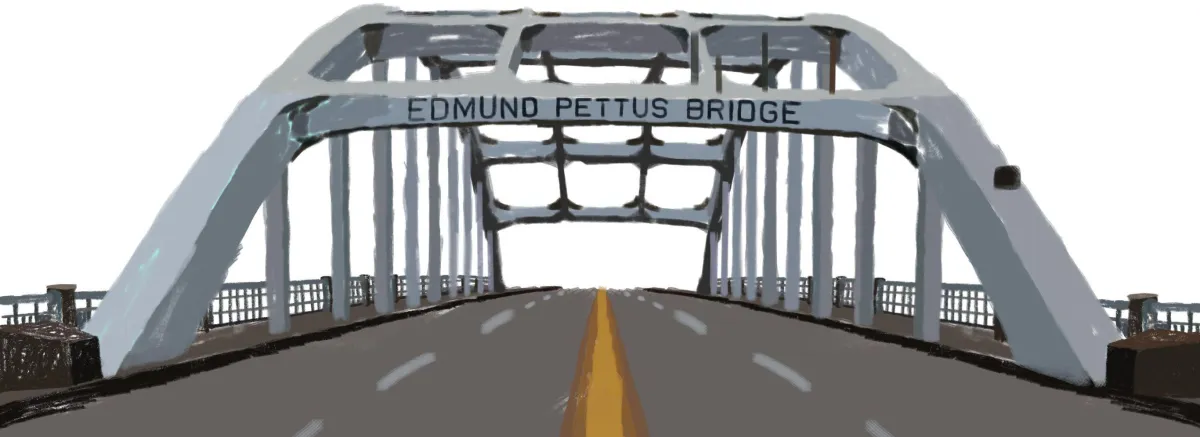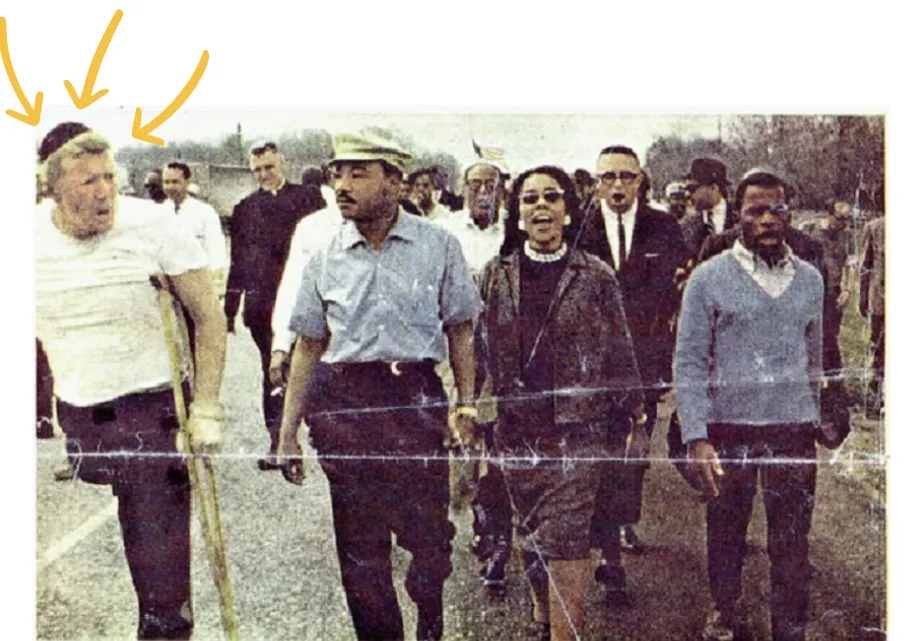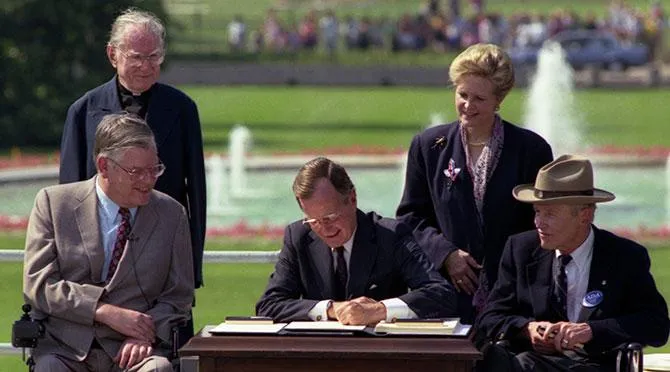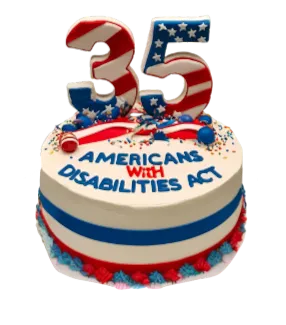Due to circumstances beyond our control, we are no longer able to
host the event as originally planned for July 26, 2025.
If you’d like to stay connected as we plan what’s next, please reach out to us at
.

Image Description: The image below is a digitally illustrated representation by Derek Heard of the Edmund Pettus Bridge, known for its historical significance in the U.S. Civil Rights Movement. The bridge’s steel arch is depicted in dark blue with white highlights along its curved structure. The name "Edmund Pettus Bridge" is prominently displayed in white capital letters across the top of the arch. The road leading up to the bridge is dark with dashed white lane markings. The vertical support beams and railings are in a light blue hue, contrasting with the dark background. The illustration uses a limited colour palette with a textured, hand-drawn effect. The overall style is simple yet expressive, focusing on the architectural structure of the bridge.

Selma Your Vote
A Disability-led March for Access
Join Selma's Foot Soldiers for the first disability-led crossing of the Edmund Pettus Bridge in Selma, Alabama on July 26, 2025
We are joining Selma's Foot Soldiers for the first disability-led crossing of the
Edmund Pettus Bridge in Selma, Alabama on July 26, 2025
Sixty years ago, foot soldiers bravely marched for voting rights
On the 35th Anniversary of the Americans with Disabilities Act (ADA), we march together for voter access
March 7, 1965
60th Anniversary of the Montgomery Voting Rights March
July 26, 1990
35th Anniversary of the Americans with Disabilities Act
July 26, 2025
First disability-led March in Selma, Alabama for Access
November 3, 2026
446 seats in Congress are up for the mid-term election
Do you know about Jim?
Jim Letherer made history during the Civil Rights Movement. As a disabled foot soldier, he walked the entire 54-mile journey from Selma to Montgomery on crutches in 1965, standing in solidarity with those fighting for the right to vote.
His presence was a powerful symbol of perseverance and allyship.
Letherer also crossed the Edmund Pettus Bridge alongside John Lewis and other brave marchers, facing the dangers and challenges of the time. His commitment to democracy continues to inspire us today.

Left to Right: Jim Letherer, Martin Luther King, Coretta Scott King, and John Lewis
Image Description: Photo from the Montgomery Voting Rights March. From left to right: Jim Letherer, a disabled white man using crutches; Dr. Martin Luther King Jr., a Black man wearing a tan hat; Coretta Scott King, a Black woman dressed in a black dress and coat; and John Lewis, a Black man wearing a white shirt, blue sweater, and black pants. They are marching in front of a crowd, with many people following behind them.
every step matters...
“You see the world through a different perspective
when you see it from a wheelchair or on a pair of crutches,
you look for things that happen to the underdogs, the long shots, those who have to beat the odds just to get
the little things that other people take for granted.”
-Jim Letherer

President George H. W. Bush Signs the Americans with Disabilities Act, 07/26/1990.
Image Description: In this historic photograph, President George H.W. Bush is seated at a table outdoors, signing the Americans with Disabilities Act (ADA) into law on July 26, 1990. To his left sits Evan Kemp, then-chairman of the Equal Employment Opportunity Commission (EEOC), and to his right is Justin Dart Jr., a key advocate for disability rights, wearing his signature cowboy hat and an ADA button. Standing behind them are Rev. Harold Wilke, a disability rights activist and minister, and Sandra Parrino, chairperson of the National Council on Disability. The setting includes a fountain and well-manicured lawns in the background, highlighting the significance of this landmark civil rights legislation for people with disabilities in the United States.
What is the ADA?
26% of the U.S. population is protected by the ADA
The Americans with Disabilities Act (ADA) is a landmark civil rights law passed in 1990 that prohibits discrimination against individuals with disabilities and ensures equal access to public life, including employment, education, transportation, and government services.

President George H. W. Bush Signs the Americans with Disabilities Act, 07/26/1990.
Image Description: In this historic photograph, President George H.W. Bush is seated at a table outdoors, signing the Americans with Disabilities Act (ADA) into law on July 26, 1990. To his left sits Evan Kemp, then-chairman of the Equal Employment Opportunity Commission (EEOC), and to his right is Justin Dart Jr., a key advocate for disability rights, wearing his signature cowboy hat and an ADA button. Standing behind them are Rev. Harold Wilke, a disability rights activist and minister, and Sandra Parrino, chairperson of the National Council on Disability. The setting includes a fountain and well-manicured lawns in the background, highlighting the significance of this landmark civil rights legislation for people with disabilities in the United States.
The ADA protects the right to vote by ensuring people with disabilities can vote independently, privately, and without discrimination. It also guarantees information and platforms are accessible, helping voters make informed choices and fully participate in democracy.
...every vote counts

Image Description: A round, white-frosted cake decorated with red, white, and blue elements celebrates the 35th anniversary of the Americans with Disabilities Act (ADA). The cake has bold blue lettering that reads "AMERICANS WITH DISABILITIES ACT." A red and blue ribbon wraps around the sides, and small decorative icing details in red and blue line the base. On top, a large number "35" candle, designed with stars and stripes, sits among colorful confetti-like sprinkles and small decorative spheres, emphasizing the patriotic theme.
